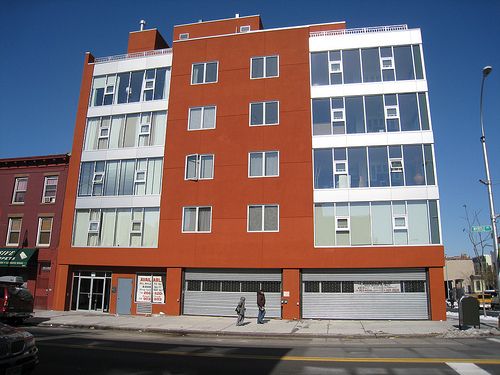
The Weakness of Neighborhood Revitalization Planning in the Low-Income Housing Tax Credit Program: Warnings from Connecticut

Fair Housing Month may be drawing to a close, but the need for ensuring efficacy across Fair Housing policies continues. This is made clear in a recently published paper by Noah Kazis, Assistant Professor of Law at the University of Michigan Law School, and Faculty Director Kathy O’Regan, The Weakness of Neighborhood Revitalization Planning in the Low-Income Housing Tax Credit Program: Warnings from Connecticut. The paper uses empirical findings to shed new light on long-standing concerns of a crucial provision of the Low-Income Housing Tax Credit (LIHTC) meant to improve neighborhood conditions and progress Fair Housing outcomes.
LIHTC is the nation’s most powerful funding lever for producing and preserving affordable housing. In awarding LIHTC, federal law requires that states prioritize allocating tax credits to projects in high-poverty neighborhoods that contribute to a “concerted community revitalization plan” (CCRP). This specification put forth by Congress is meant to ensure that LIHTC avoids harmfully concentrating poverty, entrenching segregation, or inefficiently deploying resources and instead facilitates broader neighborhood revitalization. However, several scholars and policy makers have warned that many states are deeply under-enforcing this requirement, rendering it essentially ineffective. After examining applications for competitive tax credits to be used in high poverty neighborhoods in Connecticut over a ten-year period, this paper echoes those warnings.
The authors’ findings reveal little revitalization planning that met either the terms or the intent of the statute, yet every single application that sought credit for contributing to a CCRP received it. Moreover, they observe little difference in the revitalization planning described in applications located in high-poverty neighborhoods and applying for the CCRP priority point, on the one hand, and those located in low-poverty neighborhoods not eligible for that priority, on the other. They therefore see little indication that the CCRP process either crossed an absolute threshold of meaningful revitalization planning or that it materially increased revitalization planning relative to what would otherwise have taken place.
The authors conclude by offering suggestions for how the CCRP process might be reformed to better leverage federal and state investments for broader neighborhood gain—and to vindicate this important Congressional mandate.
Read the full working paper, forthcoming in the Journal of Land Use and Environmental Law, here>>



